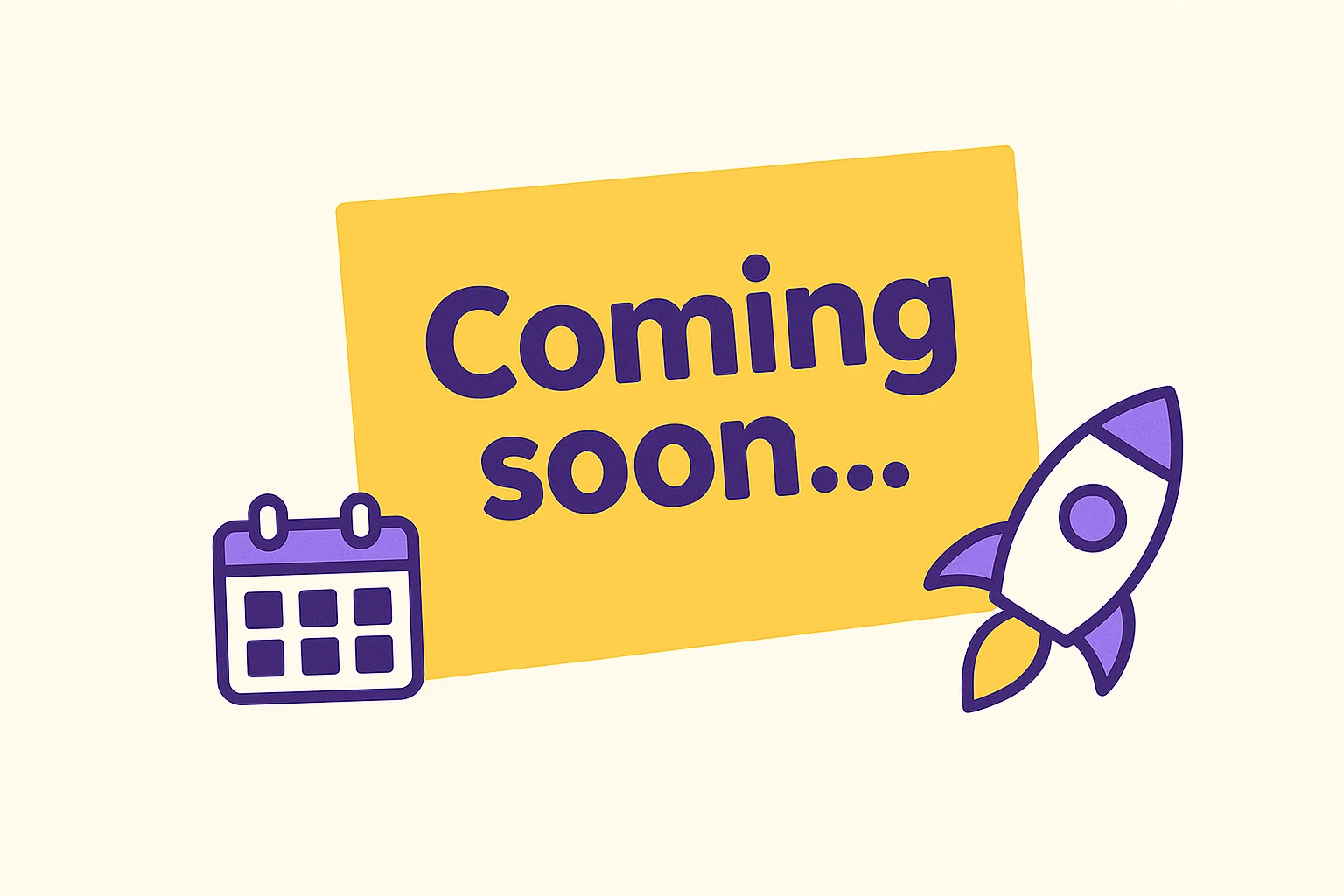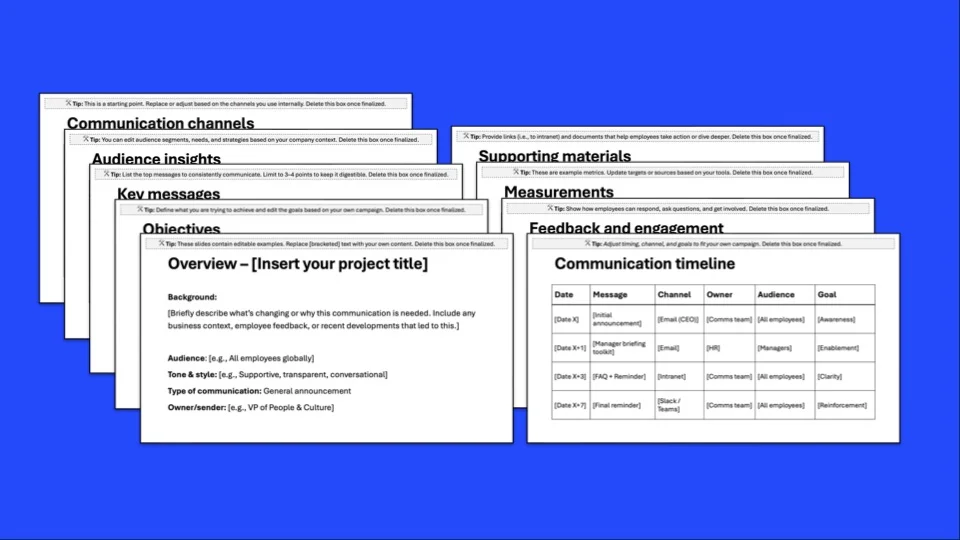Internal communication trends are evolving rapidly, driven by AI advancements, changing employee expectations, and the need for streamlined workflows in hybrid work environments. Companies that fail to adapt risk disengaged employees, poor collaboration, and reduced productivity.
A study by Gallup found that only 32% of employees worldwide feel engaged at work, a number that can significantly improve with clear, effective internal communication. This article explores the top trends shaping internal communication in 2025 and how businesses can leverage them for success.
Top 5 internal communication trends in 2025
1. Embracing artificial intelligence (AI) in internal communications
AI is revolutionizing internal communications by enabling personalized messaging, automating routine tasks, and analyzing employee sentiment. Organizations can now leverage AI to optimize engagement strategies, reduce manual workload, and provide real-time insights into employee needs.
Case study: Coca-Cola’s AI-powered chatbot
Coca-Cola has successfully implemented an AI-driven chatbot to assist employees in accessing company policies and information, reducing HR inquiries by 30% and improving efficiency.
A report by McKinsey highlights that companies integrating AI into internal communications experience a 40% boost in engagement due to improved message personalization.
Actionable insight.
Implement AI-powered chatbots, data-driven communication strategies, and automation tools to ensure timely and relevant messaging tailored to employee needs.

2. Streamlining communication channels
With the explosion of communication tools, employees are experiencing message fatigue. Too many platforms create information silos and hinder productivity. In 2025, companies are consolidating their communication tools to provide seamless and efficient messaging.
Case study: IBM’s Slack adoption
IBM struggled with email overload, leading to communication inefficiencies. By centralizing discussions on Slack, the company reduced internal email volume by 50% and significantly improved response times.
Overcoming message fatigue with platform consolidation
A PoliteMail survey found that 47% of internal communicators prioritize optimizing communication channels to prevent information overload.
Actionable insight.
Conduct an audit of internal communication tools, eliminate redundancies, and choose a primary platform to unify messaging.

Learn more about choosing the right platform in our guide on the best internal communication platforms.↗
3. Improving leadership transparency and authenticity
Employees expect leadership to be transparent, authentic, and approachable. Companies prioritizing open communication build stronger trust and engagement.
Case study: Coca-Cola leadership engagement with town halls
Coca-Cola implemented regular town hall meetings where leaders openly shared company directions and invited questions. This initiative led to a 15% increase in employee satisfaction, enhancing communication and trust within the organization.
The link between transparency and employee retention
According to Ragan Communications, 69% of employees believe that trust in leadership is the most critical factor in job satisfaction.
Actionable insight.
Encourage leadership to engage in frequent Q&A sessions, open feedback channels, and transparent reporting on company decisions.

4. Prioritizing employee well-being to combat burnout
With burnout on the rise, internal communication strategies must support employee well-being. This includes mental health initiatives, work-life balance policies, and stress-reducing communication practices.
Case study: Google’s mental health communication strategy
Google introduced a mental health-focused internal communication plan, including designated ‘quiet hours,’ no-meeting Fridays, and well-being check-ins. This resulted in higher employee satisfaction and a 35% reduction in burnout-related turnover.
Why poor internal communication increases stress
A report by Unily found that 72% of employees feel stressed due to poor internal communication.
Actionable insight.
Implement structured well-being communication policies, ensure leadership acknowledges mental health, and offer employees flexibility in work schedules.

5. Leveraging multimedia and mobile-first communication
As remote work continues, companies must adopt engaging, mobile-friendly communication formats—such as video updates, interactive posts, and dynamic dashboards—to keep employees informed and connected.
Case study: TradeWinds Resorts’ mobile-first transformation
TradeWinds Resorts revamped its internal communications by launching “TW Way,” a mobile-first app that centralizes company news and interactive content. By incorporating rich multimedia—brief videos, photos, and live Q&A sessions—they achieved almost 100% adoption rate and boosted engagement scores by 3 points. This shift streamlined communications and ensured essential updates were always at employees’ fingertips.
Why employees prefer video over text
A report by Sociabble found that 78% of people prefer videos to blog posts or articles for company updates.
Actionable insight.
Adopt a mobile-first approach using short-form videos, interactive posts, and mobile-optimized platforms to ensure internal messages are engaging and easily digestible.

How to stay ahead of internal communication trends
Staying ahead of internal communication trends requires organizations to continually assess and refine their strategies.
Businesses that successfully implement these trends often:
- Use AI-driven tools to automate routine tasks and personalize employee engagement.
- Consolidate communication platforms to reduce message fatigue and improve efficiency.
- Encourage transparent leadership communication to build employee trust and retention.
- Prioritize employee well-being, ensuring internal messages support work-life balance.
- Leverage multimedia content to enhance information retention and engagement.
By integrating these approaches, companies can foster a more engaged and productive workforce while adapting to the ever-changing communication landscape.
Final thoughts
Adapting to these internal communication trends in 2025 will ensure organizations remain agile, employee-focused, and technologically advanced. By leveraging AI, streamlining communication channels, fostering leadership transparency, prioritizing well-being, and embracing multimedia content, companies can enhance engagement, reduce turnover, and drive productivity.
Want to take your internal communications strategy to the next level? Check out our guide on how to create an internal communications plan that works.↗







